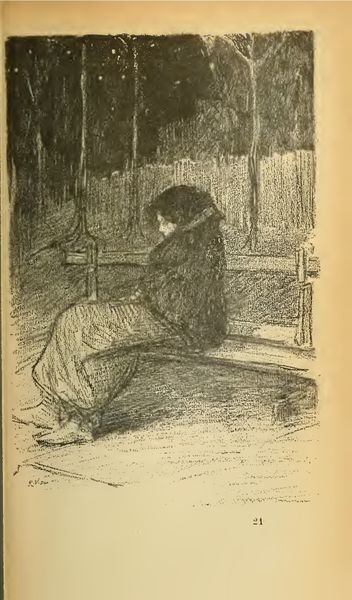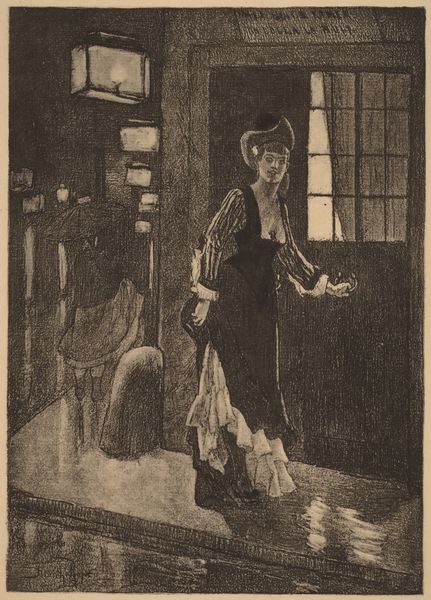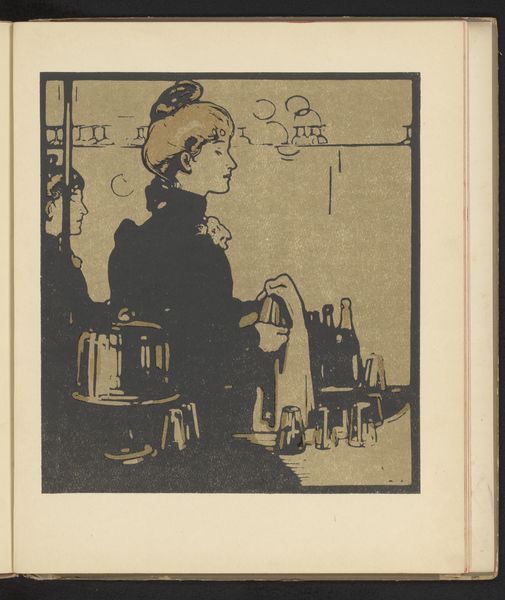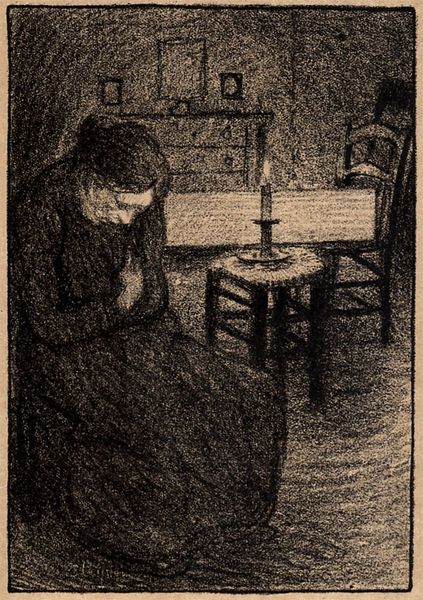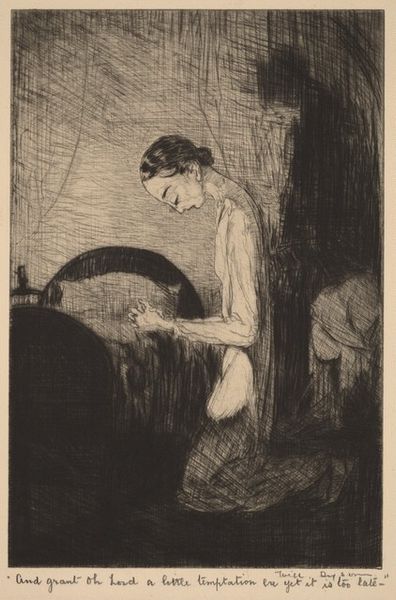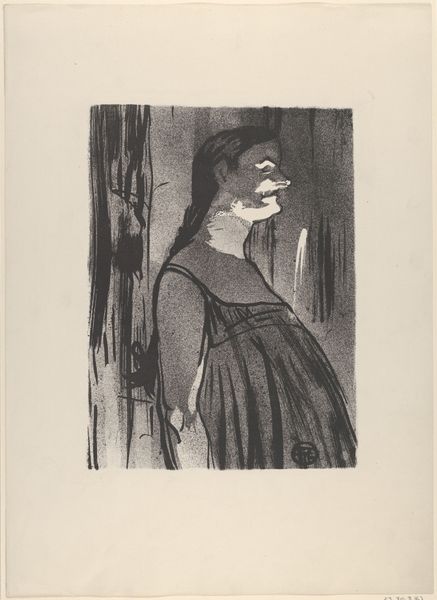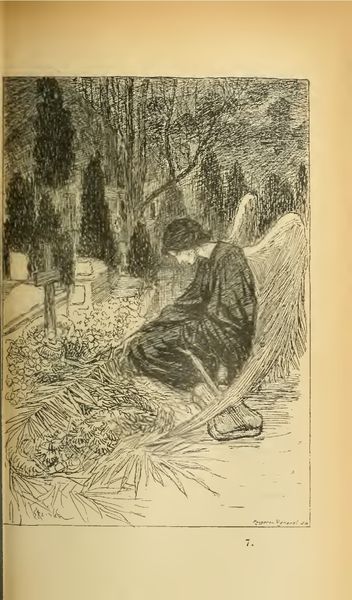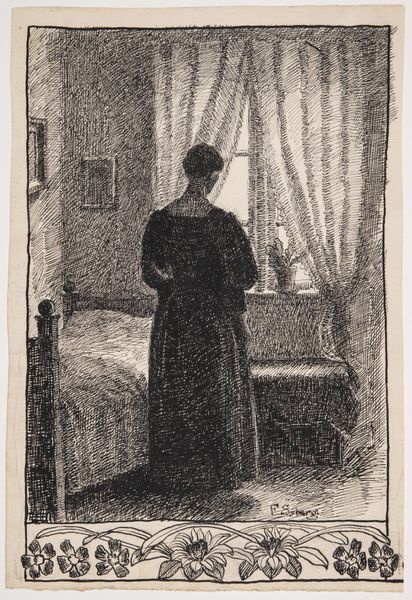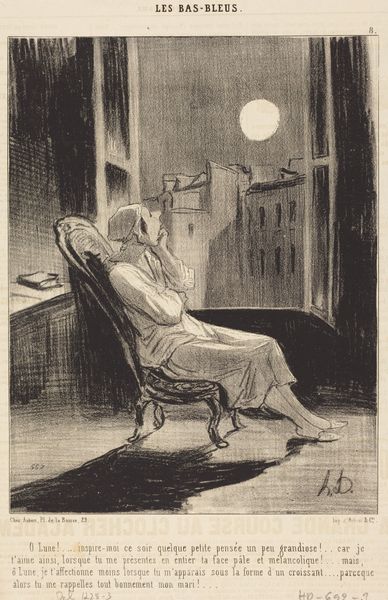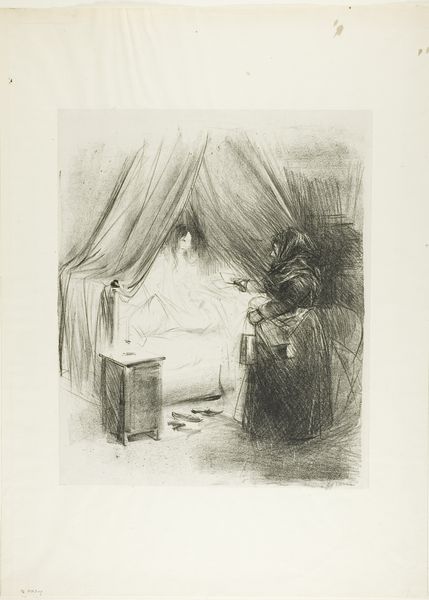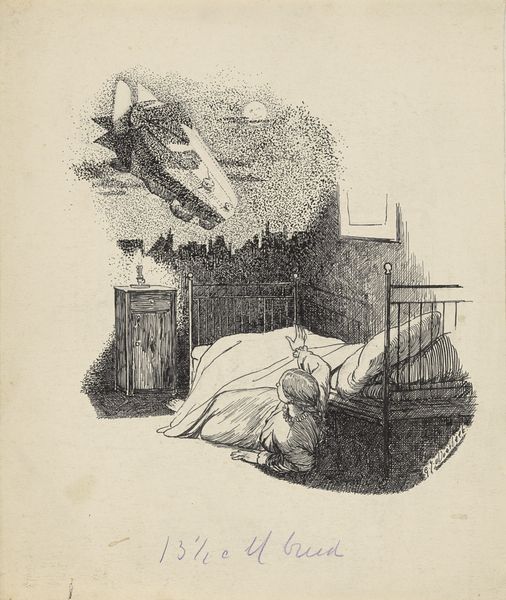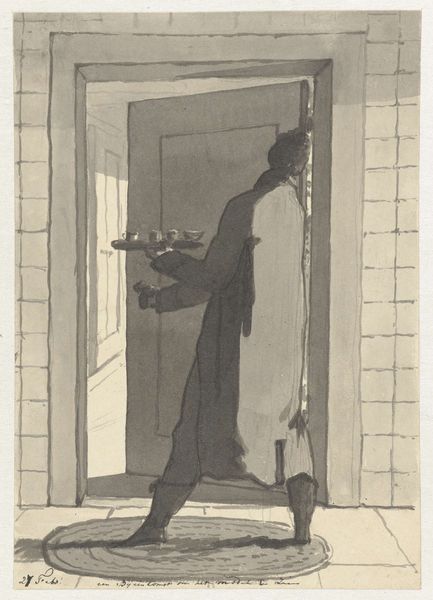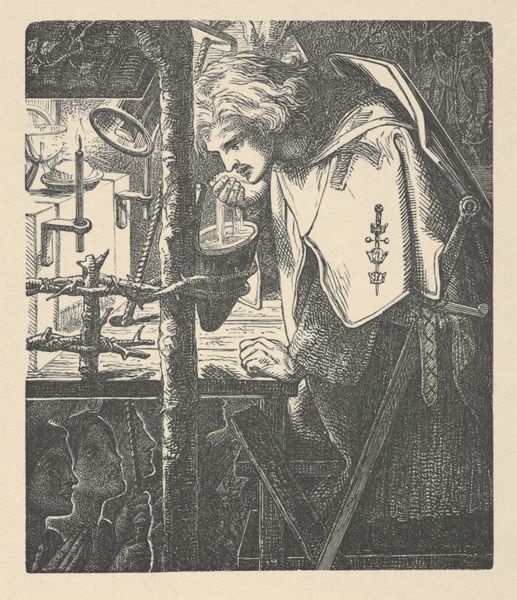
drawing, ink
#
portrait
#
pencil drawn
#
drawing
#
ink drawing
#
narrative-art
#
pencil sketch
#
text
#
ink
#
pencil drawing
#
symbolism
#
portrait drawing
Copyright: Public domain
This is "L'Aveu de la Faute," a lithograph by Théophile Alexandre Steinlen. The dominant image is of a woman kneeling in what appears to be a confessional, her dark figure contrasting against the muted background of candles and latticework. The act of confession itself carries immense cultural weight, echoing through centuries in religious rites and personal introspection. We see the motif of seeking absolution in countless forms, from ancient rituals to modern psychotherapy. The candles, symbols of truth and enlightenment, cast long shadows that recall the chiaroscuro of Renaissance paintings, where light and darkness play out the drama of morality. Consider the psychological tension inherent in this scene. Confession implies guilt, a burden carried internally and now made visible. The woman’s posture suggests remorse, a physical manifestation of inner turmoil. It's a gesture of vulnerability, a plea for redemption that resonates deeply, tapping into our collective understanding of human fallibility. This cyclical narrative of sin and absolution, so entrenched in our cultural memory, continues to evolve, taking new forms yet always returning to this primal, emotional core.
Comments
No comments
Be the first to comment and join the conversation on the ultimate creative platform.
